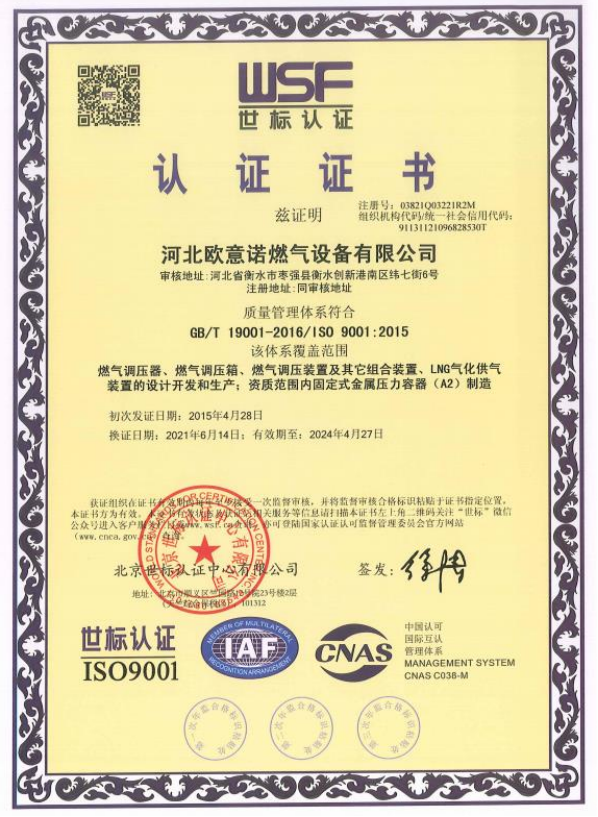
Nov . 09, 2024 00:55
Back to list
Pressure Control Solutions for Efficient Skid System Management and Performance Optimization
Understanding Pressure Regulating Skids Functionality and Applications
In the intricate world of fluid dynamics and industrial operations, pressure regulation plays a vital role in ensuring safety and efficiency. One of the key components in pressure management is the pressure regulating skid. This article delves into the functionality, design, and applications of pressure regulating skids, underscoring their importance in various industries.
What is a Pressure Regulating Skid?
A pressure regulating skid is a modular unit equipped with various components designed to manage the pressure of fluids in pipelines. Typically built on a steel frame, these skids are pre-assembled and tested in a controlled environment before being transported to their installation site. The compact design makes them ideal for both onshore and offshore applications, where space and installation time are critical factors.
Key Components
A pressure regulating skid encompasses several essential components
1. Pressure Regulators These devices automatically maintain the desired pressure within the system, adjusting the flow of fluids to compensate for changes in demand.
2. Valves Various types of valves, including control valves and relief valves, are integral for managing flow rates and ensuring safety by venting excess pressure.
3. Flow Meters These instruments are used to measure the flow of fluids, providing essential data for monitoring and controlling the system.
4. Piping and Fittings The skid includes a network of pipes and fittings that connect all the components, ensuring seamless fluid movement.
5. Instrumentation and Controls Modern skids are equipped with control panels that allow operators to monitor performance and make adjustments remotely, enhancing operational efficiency.
Functionality
pressure regulating skid

The primary function of a pressure regulating skid is to ensure that the pressure of the fluid remains within specified limits
. This is crucial for- Safety High-pressure systems can pose significant hazards. By regulating pressure, skids help prevent accidents such as ruptures or explosions.
- Efficiency Maintaining optimal pressure levels ensures that systems operate efficiently, reducing wear and tear on equipment and lowering operational costs.
- Consistency Industries often require specific pressure levels for consistent product quality. Pressure regulating skids enable businesses to maintain these necessary conditions.
Applications
Pressure regulating skids find applications across a wide range of industries
- Oil and Gas In the oil and gas sector, these skids are used to manage the pressure of crude oil and natural gas from extraction points to processing facilities.
- Water Treatment They are integral in water treatment plants where precise pressure control is necessary for filtration and purification processes.
- Chemical Processing Chemical plants utilize pressure regulating skids to ensure that reactions occur under safe and optimized pressure conditions.
- HVAC Systems In the heating, ventilation, and air conditioning industry, these skids help maintain appropriate pressures for efficient system operation.
Conclusion
Pressure regulating skids are essential devices that facilitate safe and efficient fluid management across various industries. By understanding their components and functionalities, operators can optimize their processes, minimize risks, and enhance overall productivity. As industries continue to evolve, the importance of such modular systems will only grow, paving the way for innovations in pressure management technologies. Effective pressure regulation not only ensures compliance with safety standards but also contributes to the economic success of industrial operations.
Latest news
-
Safety Valve Spring-Loaded Design Overpressure ProtectionNewsJul.25,2025
-
Precision Voltage Regulator AC5 Accuracy Grade PerformanceNewsJul.25,2025
-
Natural Gas Pressure Regulating Skid Industrial Pipeline ApplicationsNewsJul.25,2025
-
Natural Gas Filter Stainless Steel Mesh Element DesignNewsJul.25,2025
-
Gas Pressure Regulator Valve Direct-Acting Spring-Loaded DesignNewsJul.25,2025
-
Decompression Equipment Multi-Stage Heat Exchange System DesignNewsJul.25,2025

